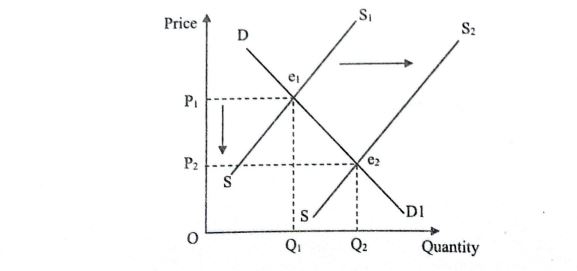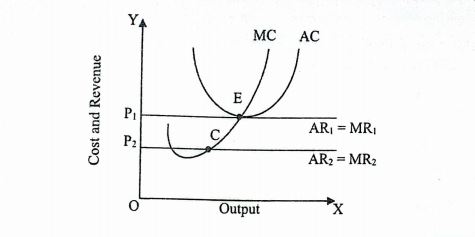ICSE 10th Economics Question Paper 2024: The Indian Certificate of Secondary Education (ICSE) Class 10 Economics exam 2024 is over. The exam was conducted on March 6, 2024, from 11:00 a.m. to 1:00 p.m. in complete offline mode. The paper was conducted for 80 marks, and an additional 15 minutes were given to read the question paper. Thus, the complete duration given for the ICSE 10th Economics paper was 2 hours, and 15 minutes.
Post-examination, the students left the exam centre and gave their views on the difficulty level of the question paper. The candidates' reactions were recorded and presented here for you to know the complete analysis of the ICSE Economics paper 2024.
ICSE Class 10 Board Exam 2024: Key Highlights
The basic information related to the ICSE Economics exam 2024 is given below:
| Particulars | Details |
| Conducting Board | Council for the Indian School Certificate Examinations (CICSEE) |
| Board Type | National Board |
| Official Website | CICSEe.org |
| Name of Exam | Indian Certificate of Secondary Education Examination (ICSE) |
| Board Exam Dates | February 21, 2024 - March 28, 2024 |
| Mode of Exam | Offline |
| Subject Name | Economics |
| Exam Date | March 6, 2024 |
| Exam Timing | 11:00 a.m. - 1.00 p.m. |
| Exam Duration | 2 hours |
| Total Marks | 80 Marks |
ICSE 10th Economics Exam 2024: Paper Format
As per the ICSE Economics question paper format analysis, the exam paper had 80 marks in two sections (A and B). The questions in Section A were compulsory. The choice was given in Section B. The marks were equally divided between both sections (40 marks each).
| Section A (All Subjects are Compulsory) | Number of Questions | Marks |
| Question 1. Choose the correct answers to the questions from the given options. | 16 MCQs | 16 x 1 = 16 |
| Question 2 | 4 Sub-parts | 4 x 2 = 8 |
| Question 3 | 4 Sub-parts | 4 x 2 = 8 |
| Question 4 | 4 Sub-parts | 4 x 2 = 8 |
| Section B (Any four questions from this Section.) | Marks | |
| Question 5 | 2 Sub-parts | 2 x 5 = 10 |
| Question 6 | 2 Sub-parts | 2 x 5 = 10 |
| Question 7 | 2 Sub-parts | 2 x 5 = 10 |
| Question 8 | 2 Sub-parts | 2 x 5 = 10 |
| Question 9 | 2 Sub-parts | 2 x 5 = 10 |
| Question 10 | 2 Sub-parts | 2 x 5 = 10 |
ICSE Economics Class 10 Exam 2024: Know Student Reaction
As per students, “The Economics paper today felt balanced, covering a good range of topics from the syllabus. The MCQs, in the beginning, were a confidence booster, and the answerable questions allowed us to showcase our understanding.
Some questions required applying concepts to real-world scenarios, which was a good challenge. Overall, the paper felt fair and manageable for students who prepared well.”
ICSE Economics Class 10 Exam 2024: Know Expert Reaction
As per experts, “The ICSE Class 10 Economics paper this year was generally viewed as balanced and fair, covering the key concepts from the syllabus. The difficulty level seemed moderate, with a mix of straightforward and thought-provoking questions. Students who had revised comprehensively and practiced applying their knowledge to various scenarios would have found the paper manageable.”
This exam analysis was conducted based on the reviews of a handful of students. The opinion might vary for a larger group.
ICSE 10th Economics Question Paper PDF 2024
To download the free PDF of ICSE Economics 2024 Question Paper click on the link below:
Download ICSE Class 10 Economics Question Paper PDF 2024 |
ICSE Class 10 Economics Answer Key 2024
Question 1
(i) If the price elasticity of demand for a commodity is 2 and the percentage change in price is 5, the percentage change in quantity demanded will be:
(a) 3
(b) 2.5
(c) 10
(d) 7
Answer: (C) 10
(ii) Assertion: An increase in public expenditure during recession can help to control the situation.
Reason: Government reduces subsidies to overcome its budget deficit.
(a) Both Assertion and Reason are true, and Reason is the correct explanation of Assertion.
(b) Both Assertion and Reason are true, but Reason is not the correct explanation of Assertion.
(c) Assertion is true but Reason is false.
(d) Assertion is false but Reason is true.
Answer: (c) Assertion is true but Reason is false.
(iii) At the point of inflextion, is maximum.
(a) total product
(b) total cost
(c) average product
(d) marginal product
Answer: (d) marginal product
(iv) In which one of the following types of market, are Average Revenue curve and Market Demand curve the same?
(a) Monopoly
(b) Oligopoly
(c) Perfect Competition
(d) Monopolistic Competition
Answer: (c) Perfect Competition
(v) The diagram given below shows the change in price of cotton shirts. Which one of the following causes the equilibrium price to move from P₁ to P₂
(a) Increase in excise duty on raw cotton.
(b) Expected fall in future price of cotton shirts.
(c) Fall in the price of synthetic shirts.
(d) Increase in wage rate.
Answer: (c) Fall in the price of synthetic shirts.
(vi) Refer to the diagram given below and choose the incorrect statement
(a) E is the equilibrium point.
(b) The diagram shows a situation of normal profit.
(c) C is the shut down point.
(d) E is the break even point.
Answer: (b) The diagram shows a situation of normal profit.
(vii) Government of India purchased Raffle aircrafts from France in recent times. Which one of the following market forms is applicable for this product in India?
(a) Monopsony
(b) Monopoly
(c) Oligopoly
(d) Monopolistic Competition
Answer: (a) Monopsony
(viii) Revenue receipts in the government’s budget:
(a) create liability.
(b) reduce liability and create assets.
(c) reduce assets.
(d) keep liability and assets unaltered.
Answer: (d) keep liability and assets unaltered
(ix) If S > I, it will lead to:
(a) excess demand.
(b) deficient demand.
(c) notional demand.
(d) actual demand.
Answer: (b) deficient demand.
(x) An increase in the number of firms in the market causes a rightward shift in the market supply curve, but the individual supply curve may shift leftwards. Justify the statement.
Answer: More firms mean more supply at each price, causing a rightward shift in the market curve. Individual firms might face higher input costs due to increased competition, leading to a leftward shift in their own supply curve.
(xi) State whether the following is True or False. Give a reason for your answer. TVC is an avoidable cost.
Answer: False
(xii) Mention any one difference between Induced investment and Autonomous investment.
Answer: Induced investment depends on the expected return from an existing investment, whereas Autonomous investment is not influenced by the expected return from existing investments.
(xiii) Why is the demand curve for foreign exchange negatively sloped?
Answer: The demand curve for foreign exchange is negatively sloped because as the price (exchange rate) decreases (appreciates), demand for the foreign currency increases, and when the price increases (depreciates), demand decreases.
(xiv) Mention any one difference between the Balance of Trade and the Balance of Payment.
Answer: The balance of trade measures the difference between a country’s exports and imports of goods only, while the balance of payments includes not only goods but also services, income and financial transfers between a country and the rest of the world. It provides a comprehensive view of a country’s economic transactions with other nations.
(xv) How is APS obtained from APC?
Answer: APS + APC = 1
APS = 1 - APC
Thus, the Average Propensity to Save (APS) is obtained by subtracting the Average Propensity to Consume (APC) from 1.
(xvi) With reference to Simple Keynesian model, give the meaning of ex-ante demand.
Answer: In the Simple Keynesian Model, “ex-ante” demand refers to the expected or planned demand for goods and services by consumers, businesses, and the government before they actually make their purchases.
Download ICSE Class 10 Economics Question Paper Solved 2024 PDF |
Also Read:



Comments
All Comments (0)
Join the conversation